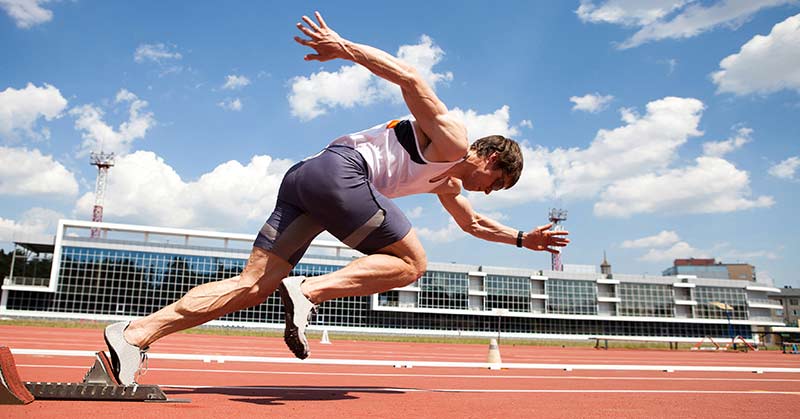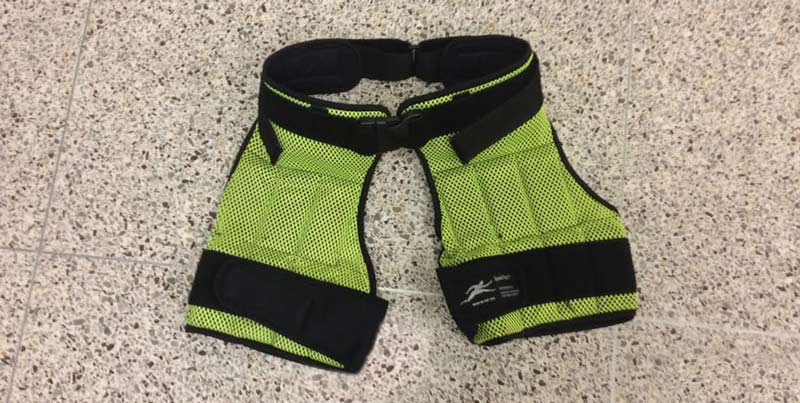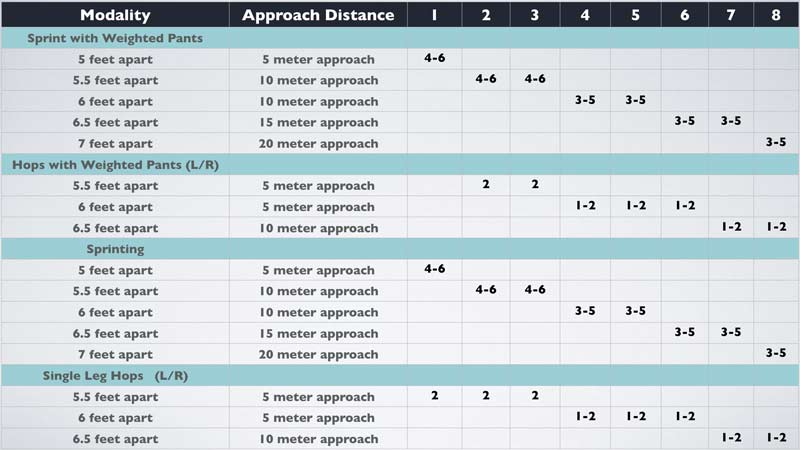
I’ve been coaching sprinters in track and field at Altoona Area High School in Pennsylvania for twenty years, and it’s led me on an exhausting yet extremely rewarding journey. Considering all the variables involved, training to increase speed is never easy. There’s enough information out there to make your head spin, especially for high school coaches who have such a wide variety of training ages and abilities.
One way we train our sprinters at Altoona is with resistance sprinting. Resistance sprinting, when used properly, is a specific strength and force development training tool for speed development. We’ve used resistance sprinting in a variety of ways including hill sprints, weighted sleds, and sprinting against the wind.
However, we prefer weighted pants. We’ve used weighted pants for more than fifteen years, and it’s become a big part of our overall sprint philosophy.
In my quest to improve sprint performance, I’ve tried just about every training program and speed gadget available. After I stopped looking for shortcuts and miracle pills, I realized the formula for success was rooted in sound training principals based on science. I also learned from the successes and failures of my coaching experiences. We call that the art and science of coaching.

Why Use Weighted Pants?
I first learned about the benefits of weighted pants when I read Innovations in Speed Development, a speed training manual written by Remi Korchemny for the USATF development program. The manual’s objective was to show how to increase speed using resistance and assistance training. I was lucky to come across the manual while at a clinic when I first started coaching. Among the many drills and programs in the manual, I was especially interested in his programming with weighted pants.
Korchemny wrote:
“Weight Pants are the most advanced, specific tool for speed and strength training. Weight pants directly stress the hip flexors (muscle group) which are responsible for leg mechanics. The stronger the hip flexors, the higher the knee lift. No other resistance can so specifically prepare the hip flexors. Weight pants also eccentrically stress the leg extensors at ground contact, as the athlete delivers a higher load over the landing leg during impact with the ground.”
Since better knee lift produces better front side mechanics which allows a greater rate of force application while sprinting, I figured why not give it a try. And since we started using weighted pants, we’ve had great success with our sprinters. Altoona holds one of the fastest 4 x 100m relay times in Pennsylvania state history at 41.29 seconds. We also hold one of the fastest 4 x 400m relay times in state history at 3:13.38.
Sprinting with weighted pants improves front-side mechanics from increased strength and power. Share on XNow before we go any further, I’m not saying that weighted pants are the Holy Grail of sprint training. What I can tell you is that I’ve witnessed huge improvements in front-side mechanics from the increased strength and power.
Programming with Weighted Pants
We start using weighted pants during our indoor track season. The ones we use only add 9 lbs of resistance to the legs (4.5 lbs. per leg). I know that doesn’t sound like much, but believe me, it’s plenty. We don’t use the weighted pants for acceleration training, but rather in our speed drills, some plyometrics, and flying sprints. We want to improve maximum velocity. And the thought of improving maximum velocity should excite any sprint coach.
We don’t add any specific resistance training until our athletes have practiced for four weeks. After the four weeks, we add specific resistance training. Our athletes have experienced the benefits of weighted pants and can’t wait to start resistance sprinting. In fact, they love it. Never ignore the psychological benefits of your training.
Video 1. This video shows our basic wicket drill (spacing 5ft). We introduce this first and progress to more difficult lengths. Emphasis is always on good front-side mechanics.
During a typical week, we use the weighted pants on a Monday. Our athletes are relaxed and well rested from the weekend (hopefully). We use our weighted pants several different ways and have had success with these methods. Our athletes wear them during our wicket drills to work on front-side mechanics and single-leg bounding to increase force production (see videos 1 and 2). The spacing is not as specific as what other coach’s use, but it’s served us well.
Video 2. We use weighted pants with our single-leg hops and progress to longer distances throughout the season, as appropriate.
Below you’ll see our 8-week progression. Remember these are only guidelines; you must adapt these drills to the ability level of your athletes and progress appropriately. If you’d like to use more specific wicket settings, I recommend you read the article “How To Improve Front-Side Mechanics and Force Production with the Wicket Drill.”

We also use weighted pants to run flying sprints (see video 3). We perform our flying 10’s and 20’s using build-ups. It reduces the fatigue and allows us to get quality repetitions. We always use our weighted pants using contrast methods, one repetition under normal conditions, 1-2 repetitions under loaded conditions, and 1-3 repetitions under normal conditions. The goal is always quality. We never run more than 300m of total volume. In fact, our normal workout is five total flying sprints; each one is 40 yards long (one without pants, two with pants, and two without pants).
Thanks to ideas from Coach Tony Holler, “Feed the Cats: Data-Driven Speed Training,” we recently purchased a timing system to record all our sprints accurately. We also plan on posting the athlete’s times on twitter and have a website up and running for our track program so our kids can monitor their progress. We want competition, and when everyone on the team can see the times for the day, the level of intensity rises.
Video 3. Flying 10 with weighted pants on the track. Note the acceleration before the maximal speed work.
Before Trying Weighted Pants in Your Training
There are many more ways to use weighted pants in your sprint training. I’ve discussed the ones that have been most successful for us over the years, and I do believe they’ve helped our sprinters run faster. This year, since we’ll be timing all flying sprints electronically, I’ll start to gather data, and we’ll see what the results show. Optimistically, I think it will show that weighted pants are a specific resistance tool to improve maximum velocity through better front-side mechanics and increased force production. Time will tell, and that’s what makes coaching so exhausting and extremely rewarding.
Since you’re here…
…we have a small favor to ask. More people are reading SimpliFaster than ever, and each week we bring you compelling content from coaches, sport scientists, and physiotherapists who are devoted to building better athletes. Please take a moment to share the articles on social media, engage the authors with questions and comments below, and link to articles when appropriate if you have a blog or participate on forums of related topics. — SF
References
- Mann, Ralph, Ph.D. (2008), The Mechanics of Sprinting and Hurdling.
- Korchemny, Remi, Innovations in Speed Development–Speed Training Manual Part 1 and 2; USATF Development Program.
- Dintiman, George and Ward, Bob (2011), Encyclopedia of Sports Speed.


Thank u coach for using my advice and very good feed back.
Remi Korchemny
Great article. So proud of you and all you’ve done.